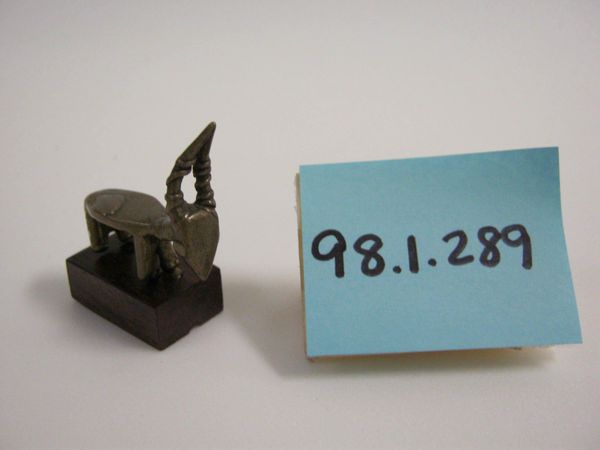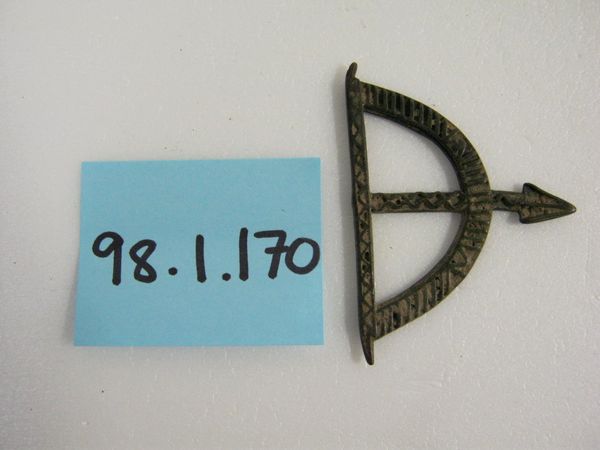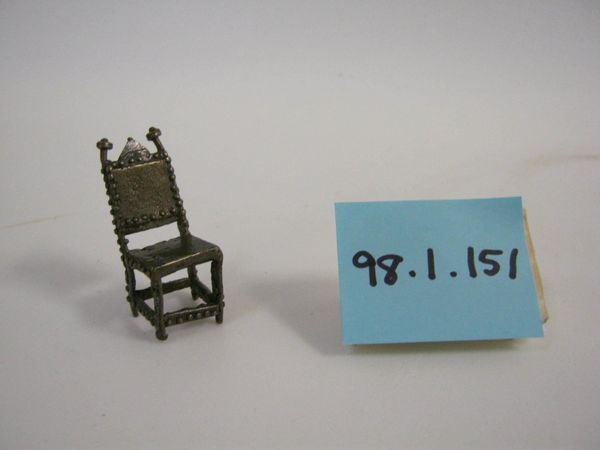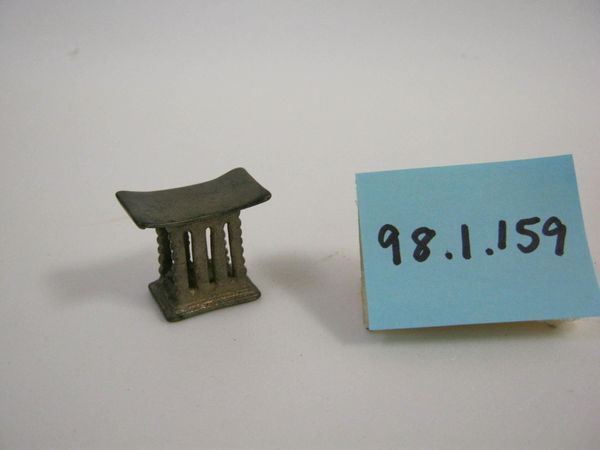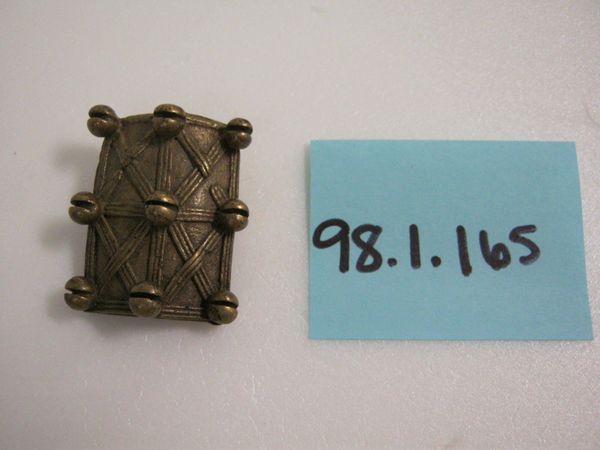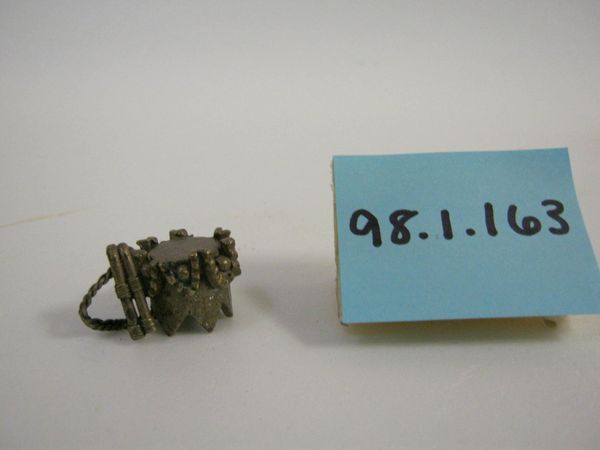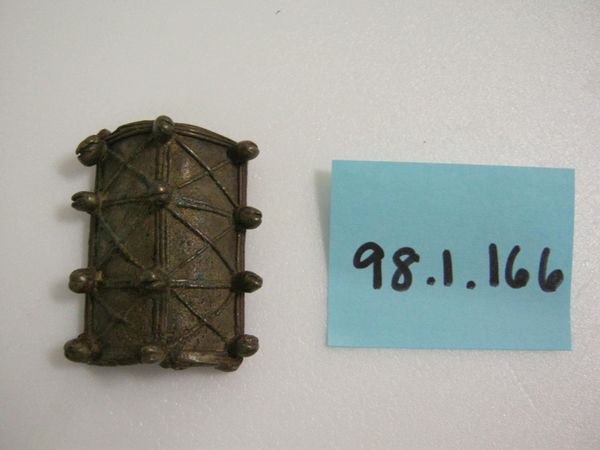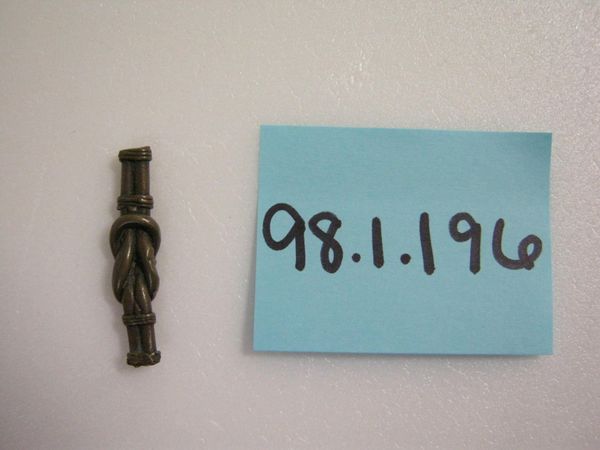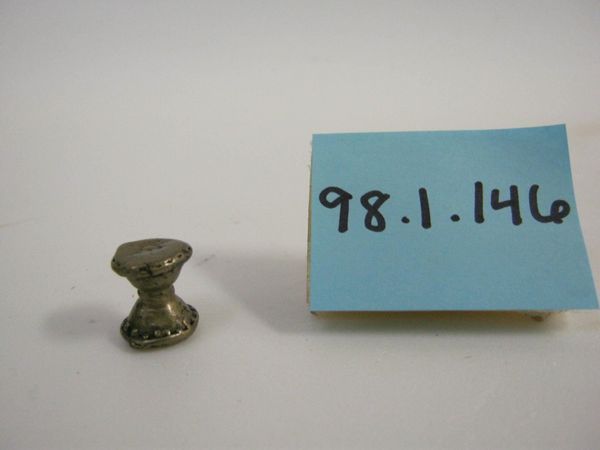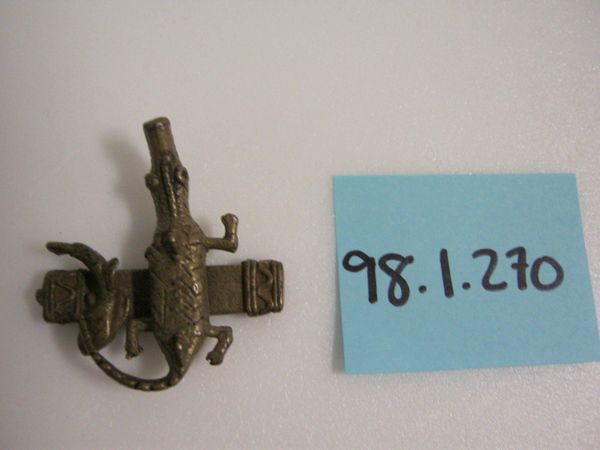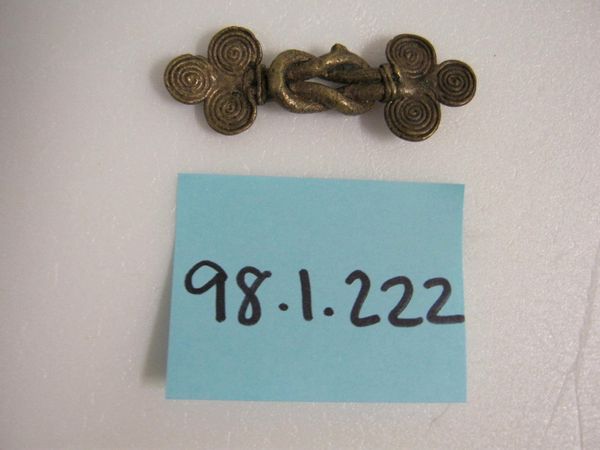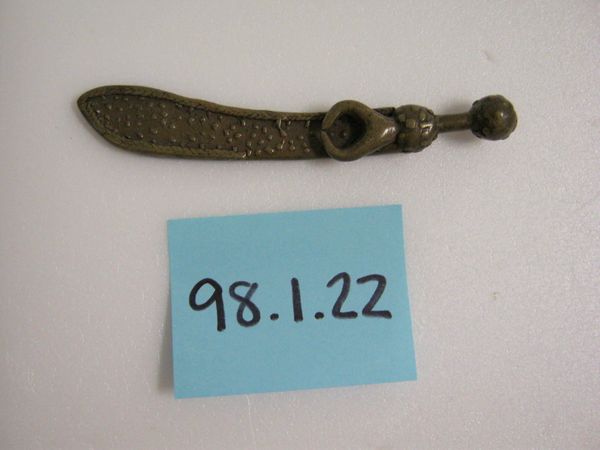![Goldweight [Ladder] by Akan](/_next/image?url=https%3A%2F%2Fd2w8kbdekdi1gv.cloudfront.net%2FeyJidWNrZXQiOiAiYXJ0ZXJhLWltYWdlcy1idWNrZXQiLCAia2V5IjogImFydHdvcmtzLzNhYzg3ZWZhLTMyNGQtNDY1Yi1hYTE0LTVlNjM5N2QyMzMwMS8zYWM4N2VmYS0zMjRkLTQ2NWItYWExNC01ZTYzOTdkMjMzMDFfZnVsbC5qcGciLCAiZWRpdHMiOiB7InJlc2l6ZSI6IHsid2lkdGgiOiAxOTIwLCAiaGVpZ2h0IjogMTkyMCwgImZpdCI6ICJpbnNpZGUifX19&w=3840&q=75)
brass, sculpture
#
african-art
#
brass
#
folk-art
#
sculpture
Dimensions: 1 7/8 x 1 1/8 x 1/4 in. (4.76 x 2.86 x 0.64 cm)
Copyright: Public Domain
Curator: Here we have a rather intriguing piece, an Akan goldweight shaped like a ladder. It's believed to have been created sometime between the 19th and 20th centuries. Editor: There's a raw simplicity about it. The rectilinear design, the material... it evokes a sort of primitive modernism. Almost like a miniature bronze sculpture, aged and slightly rough around the edges. Curator: Goldweights like these were part of the economic and social fabric of the Akan people, now part of Ghana. They were cast in brass using the lost-wax method and served a very practical purpose: measuring gold dust, which was the currency. However, they also became powerful symbols. Editor: So, the form itself transcends pure function? How does a ladder translate into something beyond weighing precious metals? Curator: Well, the ladder motif carries multiple layers of meaning within Akan culture. It often represents upward mobility, both literally and figuratively, ambition, and also the support one receives from family or community. Think of it: the climb to success needing that essential support. Editor: I see, it speaks of aspiration. Even formally, the verticality reinforces this upward movement. The patina hints at decades of use, of being passed down, embedded in everyday transactions. Does the simplicity indicate this was for common usage, perhaps? Curator: Possibly. Though goldweights became talking points –miniature proverbs and social commentaries circulated in these objects. Certain forms and narratives increased an individual’s social capital. Someone displaying their wisdom through these pieces may have achieved prestige. It suggests that commerce, ethics, and power were carefully mediated by these objects. Editor: It’s a reminder that even the most mundane objects can be deeply entwined with cultural values and complex narratives. It is fascinating that this "ladder" becomes something far more evocative when we understand the socio-political environment from which it arose. Curator: Exactly! The ladder leads not just upward, but into a deeper understanding of a culture’s beliefs and practices. It’s displayed here at the Minneapolis Institute of Art and encourages visitors to ask bigger questions about wealth, community, and purpose. Editor: It seems that a little close looking—or, in this case, climbing the rungs of analysis—can reveal rich and lasting impressions of even humble, historic artifacts.
Comments
No comments
Be the first to comment and join the conversation on the ultimate creative platform.
